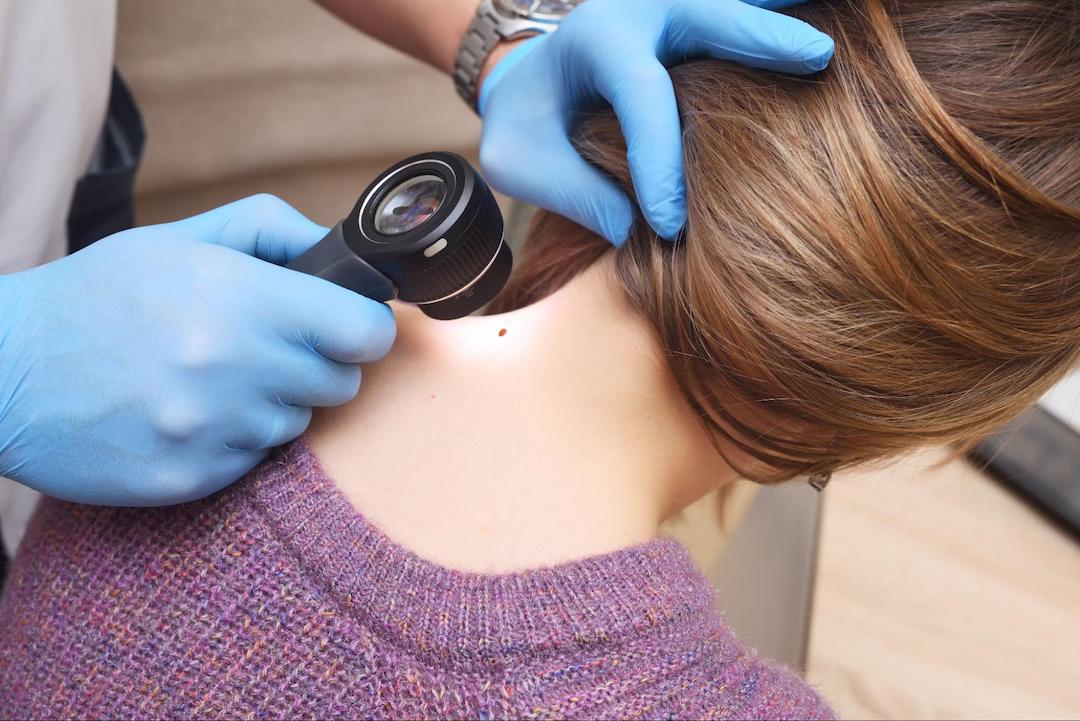
UV Safety and Other Public Health Issues: The Pharmacist’s Role
As we head into high summer, the bright sun signals both fun and foe – an enemy against exposed skin and eyes. July is also UV (ultraviolet) Safety Month. It’s our annual reminder to take UV safety seriously, during this month when we’re exposed to the strongest direct sunlight. (The rest of the year is just as important!)
Skin Cancer: A Public Health Issue
UV radiation is a major risk factor for skin cancer. UV rays can also cause premature aging and eye damage.
According to the Skin Cancer Foundation, one in five Americans will develop some type of skin cancer in their lifetimes. Official stats from the National Institutes of Health (NIH) show Florida as having the second highest incidence of melanoma, the most serious type of skin cancer, in the United States. Floridians are also at a higher risk for UV-attributable melanoma.
To clarify:
- Florida has the 2nd highest rates of melanoma in the US
- Floridians are also at a higher risk of melanoma caused by UV radiation
UV safety is a public health issue everywhere, and a more urgent one in Florida – but for a variety of reasons we’ll cover below, pharmacists are well-poised to be able to make a difference.
Pharmacist as UV Safety Advocate
Pharmacists are on the front lines of UV safety advocacy due to:
- Education and experience
- Customer relationships
- High level of public trust
- Their position in a retail setting
Reason 1: Education and experience
UV protection goes beyond cosmetic concerns and has significant implications for overall health. Excessive exposure to UV radiation can lead to various health issues, including sunburn, premature aging, eye damage, and an increased risk of skin cancer. Because of their educational backgrounds, pharmacists play a crucial role in raising awareness about these risks and promoting the importance of UV protection as a fundamental aspect of healthcare. By emphasizing the need for UV safety, pharmacists can help prevent both acute and long-term sun-related health problems.
One of the key areas where pharmacists can contribute to UV safety is by identifying potential drug interactions that may increase sensitivity to UV radiation. Certain medications, such as antibiotics, antihistamines, and non-steroidal anti-inflammatory drugs (NSAIDs), can make the skin more susceptible to sunburn and other UV-related damage. Pharmacists can review patients’ medication profiles and provide personalized counseling on the potential risks associated with specific medications. This ensures that patients are aware of any increased sensitivity to UV radiation and can take appropriate precautions, such as using higher SPF sunscreen or avoiding excessive sun exposure during the course of their medication.
Furthermore, pharmacists can collaborate with other healthcare professionals, such as dermatologists and primary care physicians, to ensure comprehensive UV safety for patients. By sharing their knowledge and expertise, pharmacists can contribute to a multidisciplinary approach to sun protection. This collaboration allows for a holistic evaluation of patients’ UV safety needs, considering both their medical history and current medications.
Reason 2: Customer relationships
Pharmacists are often the first point of contact for individuals seeking advice on sun protection. They have the opportunity to assess patients’ individual needs and recommend appropriate sunscreen products based on their skin type, lifestyle, current medications, and more.
By actively engaging with patients, pharmacists can address misconceptions, provide personalized advice, and empower individuals to make informed decisions about their UV safety.
Pharmacists also tend to have more consistent contact with patients than other healthcare professionals. This is one of the reasons they enjoy a high level of trust among the public. A patient might not feel comfortable asking about sunscreen recommendations from their physician but find no problem asking their pharmacist.
This type of relationship between pharmacist and patient also facilitates conversations about appropriate SPF (Sun Protection Factor) and broad-spectrum protection, or about how to properly apply (and reapply) sunscreen throughout the day, including on often-neglected areas such as the ears, scalp, and lips.
Their collaboration with other healthcare professionals further enhances the effectiveness of UV protection interventions. Through their efforts, pharmacists contribute to skin cancer prevention and detection, improving overall health outcomes.
Reason 3: High level of public trust
Community pharmacies are everywhere, including in medically underserved areas. Because of their widespread availability and credibility as healthcare professionals, pharmacists are well positioned to be screeners for public health issues like skin cancer. They can help spot signs of cancer and refer patients to get tested.
The Centers for Disease Control and Prevention (CDC) and other policy-setting health organizations have recognized the important role that pharmacists play in public health. The CDC has collaborated with pharmacy organizations to improve public health outcomes through pharmacist-led initiatives, such as immunization programs.
Organizations like the National Cancer Institute provide questions and answers for pharmacists to use when educating their patients about skin cancer and sun protection. This resource emphasizes the importance of sun protection for certain patient subgroups, such as those with fair skin or a history of skin cancer.
Access to these types of important resources positions pharmacists to provide ideal interventions towards public health and, specifically, UV safety.
Reason 4: Their position in a retail setting
In addition to offering patient care, pharmacies typically sell products. With their expertise, pharmacists can help patients navigate the overwhelming options available in the market and select the most suitable sunscreen products for their specific needs. They can counsel customers on what to look for in a sun protection product and how to properly use them.
The retail setting also provides unique opportunities for pharmacists to engage with the public about sun safety. For example, a pharmacist who sees a regular customer come in with a fresh gel manicure every couple weeks notices they’re here to pick up medications that increase sun sensitivity. The pharmacist sees an opportunity to mention that the UV lights in the gel nail dryer at the salon could be exposing them to a higher risk of skin cancer. This type of opportunity does not often present itself to other healthcare professionals.

UV lamp for gel manicures
The retail setting also makes it easier for pharmacies to distribute brochures, QR codes to websites, and other informational materials that promote skin cancer prevention. The foot traffic into a store, compared to a doctor’s office, better positions community pharmacies as disseminators of health information.
In addition to helping people take precautionary measures, pharmacists can also guide customers toward after-sun care and treatments after sun exposure. By providing comprehensive advice on different aspects of UV safety, pharmacists empower individuals to take proactive steps in protecting themselves from harmful UV radiation.
Final Thoughts
Pharmacists serve as a crucial link between patients and healthcare providers. In recent years, the role of pharmacists in public health has expanded beyond medication management and patient counseling to include public health initiatives such as immunization programs, emergency preparedness, and public health education, which includes educating patients on the importance of UV safety and skin cancer prevention.
In addition to UV safety and skin cancer prevention, pharmacists can provide education and counseling on a wide range of public health issues to improve public health outcomes, collaborating with other healthcare professionals to provide comprehensive care to patients.

